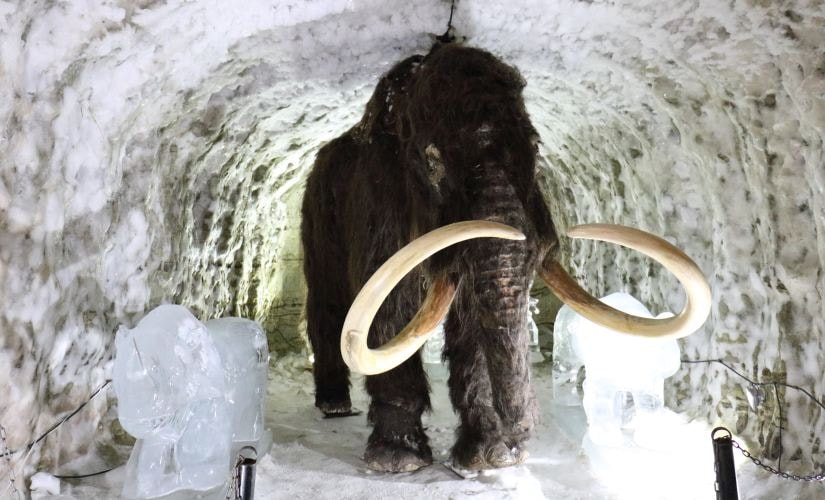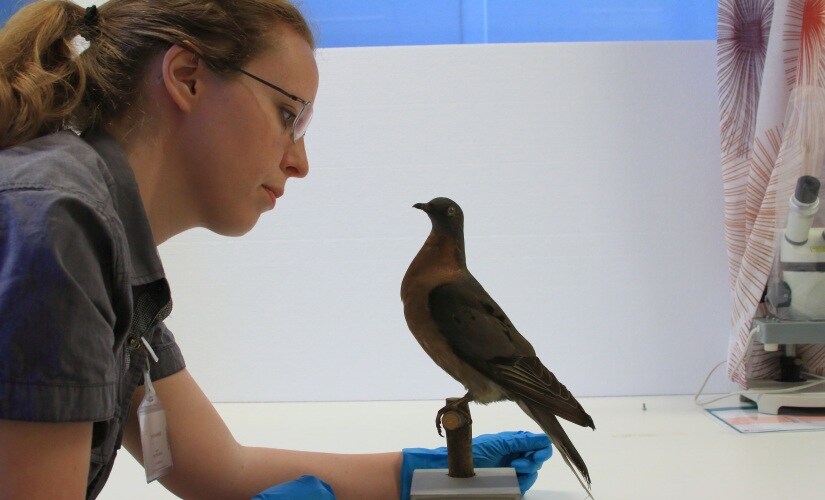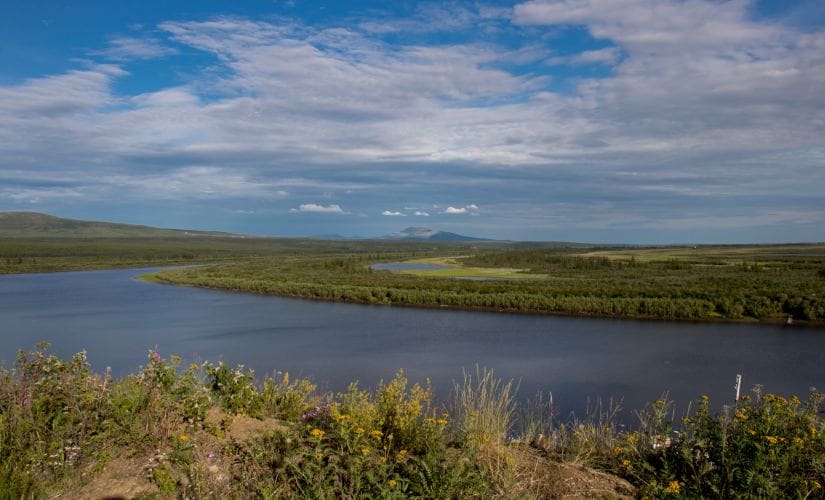Many scientists across the world are trying to bring back lost species, like the mammoth, passenger pigeon and even the dinosaur, to life. They are doing this with the help of fossils and cutting-edge genetic technologies. In 2015, Torill Kornfeldt, a Swedish science journalist, visited many of these scientists in their laboratories to find out how far they had reached in their individual quest. Her travels took her from some of the coldest places in Siberia to labs in Harvard, USA. She narrates these fascinating experiments and the emotions she went through in her book, The Re-Origin of Species: A Second Chance for Extinct Animals. Over a Skype call, Kornfeldt spoke to Firstpost about how she stumbled on the idea for the book, some of the experiments she witnessed, if any of this is a good idea and the most fun she had during her research. Following are the edited excerpts from the interview: How did you come up this idea? There are two stories to that. I was working in the Swedish public radio service ( Sveriges Radio), like the BBC. They had a science department and I worked in the daily news. So I sat in a river of science news coming in every day and as an editor, it was my job to pick which ones we were going to cover. I saw this shift happen with CRISPR (Clustered Regularly Interspaced Short Palindromic Repeats) and new genetic technology, where the news kept coming faster and was more and more diverse. It was such a huge shift and we couldn’t cover it all in the news. It was starting to get frustrating that I couldn’t do this in a broader sense. [caption id=“attachment_5630321” align=“alignnone” width=“825”]  Torill Kornfeldt. All images courtesy of Torill Kornfeldt[/caption] And then I was home sick with a really bad cold. I saw a TED talk by one of the researchers (Stewart Brand, describing the mammoth experiment) whom I later interviewed for the book, that talked about bringing back extinct species. At that moment I realised that this was a really interesting subject. At first, I had an almost childish reaction at that — how is this possible! But it was also a subject where I could talk about the on-the-edge science and also get into societal, philosophical and ethical questions, and create that larger perspective. The moment I heard the idea I fell in love with it and wanted to do something about it. Also because everything I heard or saw about bringing back species was so optimistic and was so positive and over the top. So I had to balance that off. Could you describe some of the experiments that you witness in your travels? For the mammoth, it is a really interesting situation because you find these beautifully preserved carcasses of them. And they look amazing but they are several thousand years old. A few scientists hope that they can find a few living cells within them, but to be honest, the possibility of that is zero because they have disintegrated so much. But you can find DNA. You find these minute pieces of DNA, like a giant jigsaw puzzle, then the cells. And so far scientists have been actually able to sequence that to put it together in order, which means that you have a synthetic or digital copy of the DNA. [caption id=“attachment_5630341” align=“alignnone” width=“825”]  Mammoth[/caption] So by now, the scientists are fairly certain that they have a good grip on the genes of the mammoth. And what you do after that is you start looking for genes that aren’t too different from the Asian elephants, who are their closest relative, and also look like genes that you know the function of in other species. So you think, okay this gene is the one that does fur in mice and we can see that it is different in the mammoth and the Asian elephant. We then make a synthetic copy of that specific genes and then convert it into cells. George Church in his lab in Harvard, they have about 30 genes within cells of elephants. So that is where the science is at. It is amazing in many ways that you can do that and integrate into genes. The big question that remains is once you create an organ using STEM cells or you start creating a baby, are these genes functioning as they should or are they doing what they are supposed to. But those are kind of questions that need to be answered along the way. Also, for mammoths questions, how do you do IVF in an elephant? How do you get a baby born? Which was your personal favourite experiment that you’d like to come to fruition? My strongest emotional connection was with Northern White Rhino. It was really touching to meet Nola who was one of the last individuals of the species. For me, it was one of those species where it became stark that this isn’t just scientific curiosity but also a way of reversing the crisis that is currently happening. (Nola died a few months after Kornfeldt saw her and at the beginning of this year, the last male white rhino died. There are still two females alive but they won’t be able to carry the species on. To some extent, the species had already died when Kornfeldt saw Nola. “The thing is there are a lot of species like that around the world which has a few individuals left. You see the benefits that you get from genetic technologies in such sort of situations,” says Kornfeldt.) How far back in time should we go to resurrect species? If you have recently extinct species generally they would fit back into the ecosystem and things would work out without any unintended consequences. With that said, some of the older species that scientists have been working on as well could be really beneficial. For example, having something like the Aurochs back in the landscapes from where it went extinct would be really beneficial. Passenger pigeons might have been gone for almost 150 years now but we need them in the ecosystem. The ecosystem has found a new balance, so some could be disruptive the further back you go. Some of this disruption might be good but it is going to be a major change. Which of the experiments you describe is most likely to see the light of the day? I would say there are three projects that are very close and most likely see the light of the day. These are the chestnut trees in the United States, Northern White Rhinos and the Aurochs. The rhino because they have the cells and all of the pieces needed to bring them back; chestnut because they have the genetic technology which is well developed, so all they need is the public support for this idea and the legal framework to figure things out; and the Aurochs basically because they don’t have to fiddle with genetic technology that much. For most of the other species, there is one or more science hurdle to get over before they can reach the reintroduction stage. For dinosaurs, there are over 100 possible hurdles. But for mammoth and the passenger pigeons, it is not unlikely but there are specific things that we need to get past. But the interesting thing is there could be a paper published tomorrow that solves one of the many hurdles and we’d get a lift. [caption id="" align=“alignnone” width=“825”]  Kornfeldt[/caption] What were the most difficult parts of doing this book and what were the most fun things you got to do? I think the most fun and the most difficult part was the trip to Chersky in Siberia. That was lunatic but it was also amazing. I really loved it. It was quite hard to get to eastern Siberia. When I arrived in Chersky in a tiny plane with no other people in it, men in uniforms came aboard the plane to look at my papers. They were like — you stay on the plane. So I sat quietly. The research station was absolutely amazing and I had a great time there. The researchers would gather every night to play guitar and drink vodka. Fishermen would drop by to drink some more vodka every now and then. It was a specific life in a peculiar place. I kept going through this emotional back and forth. All of the researchers I met and talked to, on the one hand, were so extremely aware of the constant crisis of extinction, climate change, all of these things. But they were so idealistic but optimistic and hopeful about creating a future, so we might get to a place where we have at least the ability or the possibility to solve these problems. So for me, it was transformational as I would pick up the optimism when I would talk to the researchers, but when I would go home the realities would strike. So it was an emotional experience to be surrounded by people who had no illusions of the problems but were still optimistic. That ended up being my view of the world as well. I am still conflicted about a lot of these projects but I’ve also reached a point where I am a lot more hopeful about the future. [caption id=“attachment_5630381” align=“alignnone” width=“825”]  Siberian permafrost[/caption] If you had the magic wand, which is the one creature you would like to bring back to life? There are a few. I have this excitement of a ten-year-old kid. But I am really fascinated by some of the megafaunas that were lost from South America. Some amazing animals there, it is so fascinating. So, there are animals like the Giant Sloth which was nearly the size of the polar bears. That would be my pick. It is hard not to pick the dinosaurs or the tyrannosaurus, of course. Is this essentially a good idea to bring back species from the past? I think that it is essentially a good idea to try. I think it is a good idea in the same way that the moon landing was a good idea. I think pushing science forward by posing these clear concrete questions of how do you build a spaceship or how do you bring back a mammoth pushes science forward in a way that produces amazing results. So it is an amazing idea from that point of view to use this as a way of trying new things and just follow that expedition of curiosity. Whether or not is it a good idea to actually release these animals in nature is another question. That has to be answered case by case. There are certain species where I am quite convinced it is a good idea, some where I am on the fence and some I am certain would be a bad idea, like the dinosaurs, if we ever made them of course. I think it is useful to separate the science of trying things from the idea of actually releasing the animals. What could be some of the drawbacks of bringing back species? The drawbacks of doing the actual science are ethical concerns, including those for the animals. You have to make sure that if you include animals in this sort of research, you have to treat them well in every way you can. And you have to take into account what stress for the animals is worth what sort of knowledge. If you introduce some species from the past in nature, maybe the net effect in nature is positive but there are going to be some species that suffer, you are going to have some species that disappear because of this shift in the ecosystem. You can’t have your cake and eat it too! You are also going to get unintended consequences, you are never going to be certain of exactly what happens. What were some of your biggest learnings in the process of this book? And how did you digest this information that you were coming across? I think my major takeaway has been the kind of clear-eyed hopefulness that these solutions inspire. These may not be the solutions, but we can find them. What I love about being a science journalist is this sense of the world constantly growing inside your head and understanding complexities. That has stuck with me, that this world is more fascinating and complex than when I first started this project. The Re-Origin of Species: A Second Chance for Extinct Animals is distributed by Context of Westland Books in India, and is available on Amazon. Originally written in Swedish by Torill Kornfeldt, it is translated in English by Fiona Graham.
Many scientists across the world are trying to bring back lost species, like the mammoth, passenger pigeon and even the dinosaur, to life. Torill Kornfeldt, a Swedish science journalist, visited many of these scientists in their laboratories to find out how far they had reached in their individual quest.
Advertisement
End of Article


)
)
)
)
)
)
)
)
)



